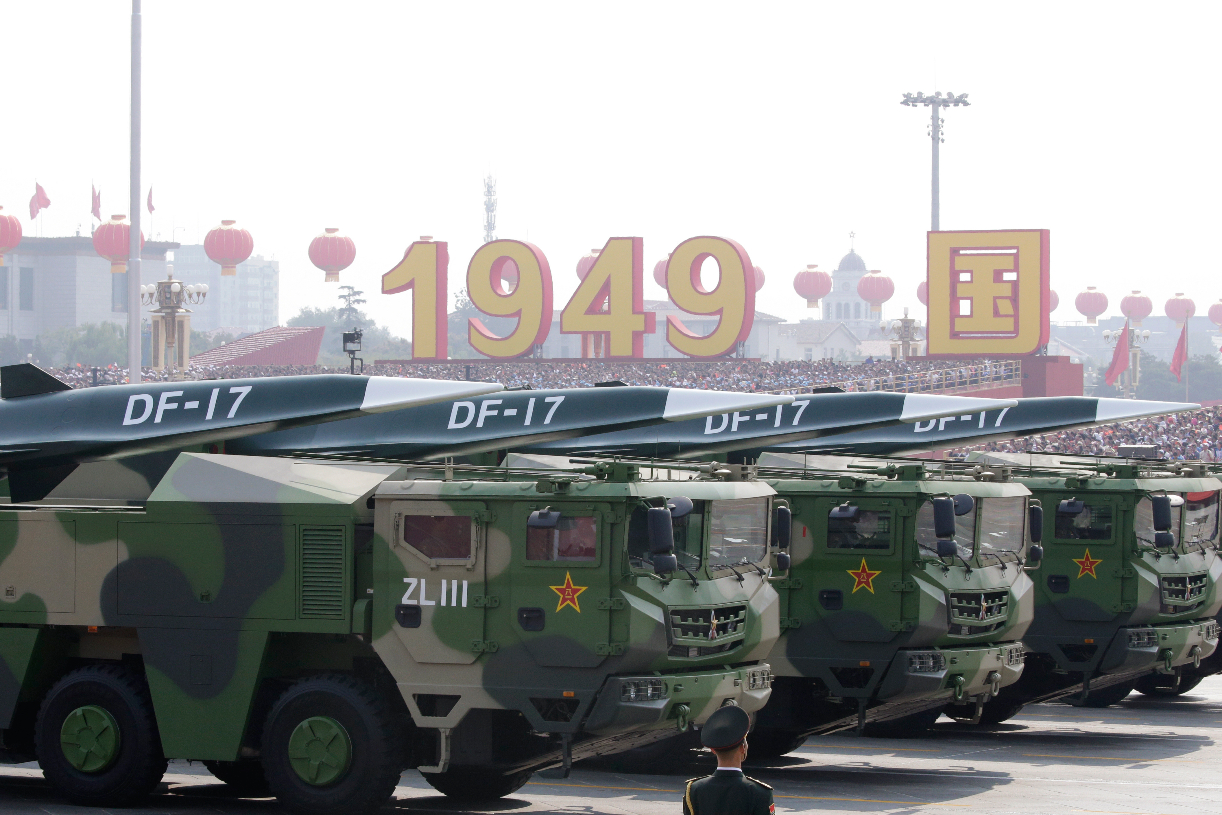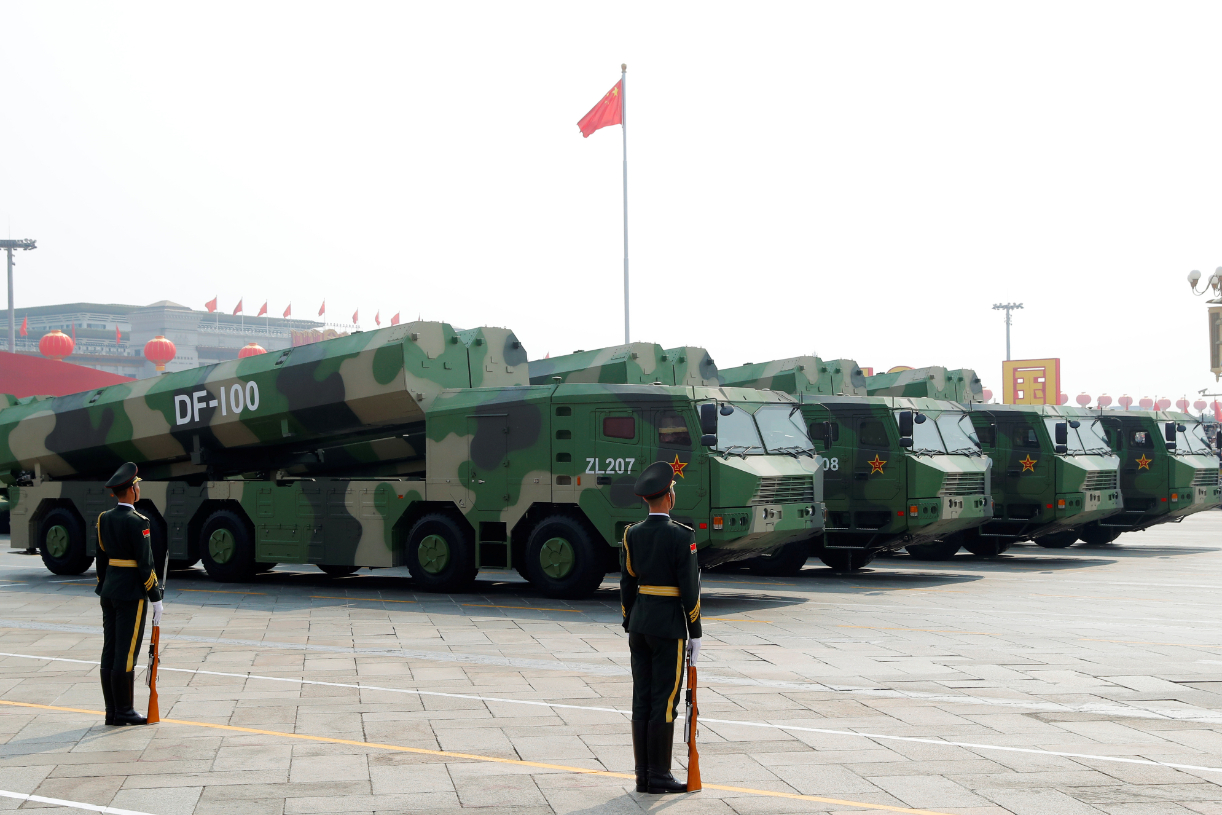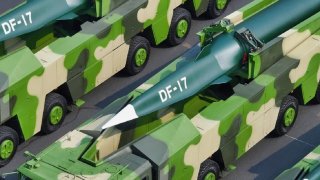The U.S. Military 'Freaks' over China's Hypersonic Missiles
China is advancing its hypersonic missile capabilities, with a growing arsenal that includes the DF-17, DF-41, and DF-ZF, capable of reaching speeds over Mach 5 and bypassing air defenses.
Summary and Key Points: China is advancing its hypersonic missile capabilities, with a growing arsenal that includes the DF-17, DF-41, and DF-ZF, capable of reaching speeds over Mach 5 and bypassing air defenses.

-These weapons, which can carry both conventional and nuclear payloads, present significant challenges for global security, particularly in the Indo-Pacific region. While hypersonic missiles offer unparalleled speed and maneuverability, making them difficult to intercept, they also face significant engineering challenges due to the extreme temperatures they encounter during flight.
Most Important Point: As the hypersonic arms race intensifies, China's investments in this technology signal a strategic effort to gain a military advantage over the United States.
China's Hypersonic Missile Arsenal: A Growing Threat to Global Security
Hypersonic missiles are the weapons of the future. With an unmatched speed, hypersonic missiles have the potential to penetrate any air defense and take out high-value targets.
As such, much like the dreadnought race on the eve of World War I, there is currently an ongoing race for hypersonic weapons. All the major military powers are involved, with the United States and China having a technological edge.
Beijing has been investing billions in hypersonic weapons technology in an effort to gain an advantage over the United States.
The Chinese Hypersonic Missile Arsenal
Today, the Chinese military’s hypersonic arsenal includes three projects. The DF-17 medium-range ballistic missile has a hypersonic glide vehicle and a range of approximately 1,000 miles. The DF-41 intercontinental ballistic missile also has a hypersonic glide vehicle. And finally, the DF-ZF hypersonic glide vehicle has a range of around 1,300 miles.
“Over the past two decades, China has dramatically advanced its development of conventional and nuclear-armed hypersonic missile technologies and capabilities through intense and focused investment, development, testing and deployment,” Paul Freisthler, the Defense Intelligence Agency’s (DIA) chief scientist for science and technology, assessed in 2023.
The Chinese military continues to invest in hypersonic missile technology, looking to improve its current capabilities and develop new ones. According to the DIA, Beijing operates at least two research sites and twenty-one wind tunnels for hypersonic munitions.

"While both China and Russia have conducted numerous successful tests of hypersonic weapons and have likely fielded operational systems, China is leading Russia in both supporting infrastructure and numbers of systems,” the DIA official added.
In a potential conflict with the United States in the Indo-Pacific, hypersonic munitions could be quite deadly, bypassing air defenses through their sheer speeds. However, hypersonic technology is still evolving, and there are many challenges in the process.
Hypersonic Weapons and Their Challenges
To begin with, hypersonic missiles travel at extremely fast speeds and can defeat an air defense system simply by being fast. With speeds starting at Mach 5 (about 3,800 miles per hour) and going up from there, hypersonic missiles can determine the course of a battle by taking out a high-value target, such as an aircraft carrier or command and control post.
Intercontinental ballistic missiles (ICBMs) that can pack nuclear warheads can reach hypersonic speeds. But ICBMs are ballistic missiles that fly out of the atmosphere before reentering on their way to the target. Conversely, hypersonic munitions are essentially cruise missiles flying at extremely fast speeds within the atmosphere. Their ability to maneuver within the atmosphere, as opposed to just reentering from a specific point, makes them unpredictable and, thus, hard to intercept. Extreme speeds come with extreme challenges. It is estimated that hypersonic missiles can encounter temperatures of over 3,000 degrees Fahrenheit or about one-third of the temperature found on the surface of the sun. Dealing with these extreme natural forces has been one of the primary challenges behind developing operational hypersonic munitions.
About the Author
Stavros Atlamazoglou is a seasoned defense journalist specializing in special operations and a Hellenic Army veteran (national service with the 575th Marine Battalion and Army HQ). He holds a BA from Johns Hopkins University and an MA from Johns Hopkins’ School of Advanced International Studies (SAIS). His work has been featured in Business Insider, Sandboxx, and SOFREP.
All images are Creative Commons and/or Shutterstock.


